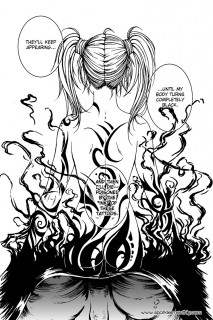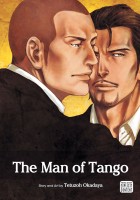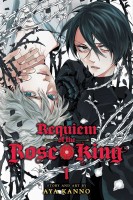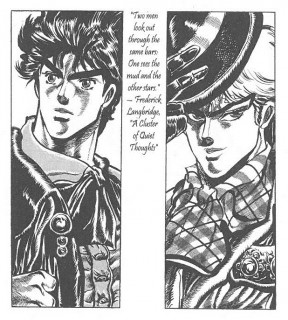 Studio Kôsen, also known simply as Kôsen, is a creative team made up of two Spanish artists: Aurora García Tejado and Diana Fernández Dévora. In Spain, they have been working together creating comics and drawing illustrations since 1998. Beginning in 2004, they started releasing translations of their work in English in the United States, but their comics have been released in other countries as well, including Germany, Poland, Italy, and Argentina.
Studio Kôsen, also known simply as Kôsen, is a creative team made up of two Spanish artists: Aurora García Tejado and Diana Fernández Dévora. In Spain, they have been working together creating comics and drawing illustrations since 1998. Beginning in 2004, they started releasing translations of their work in English in the United States, but their comics have been released in other countries as well, including Germany, Poland, Italy, and Argentina.
I was first introduced to Kôsen through their comic Saihôshi: The Guardian, the English-translation of which was initially released by Yaoi Press in 2006. An amusing fantasy with magic and exciting sword fights to go along with its dramatic romance, Saihôshi is representative of what I’ve come to expect from and love most about Kôsen’s work: beautifully drawn, highly entertaining, sexy tales of adventure with a strong sense of humor.
One of Kôsen’s most recent efforts is the ongoing, original English-language comic Windrose, currently being serialized in the online multi-media magazine Sparkler Monthly. It’s a delightful series about a young Spanish lady named Danielle in the 17th century who, when her father goes missing, sets out to find him. In the process she becomes involved with a pair of travelers, Angeline and Leon, who have their own reasons for wanting to help Danielle.
 And now there will be even more of Kôsen’s work at Sparkler Monthly! I am pleased to have the privilege to announce that the site will also be hosting Kôsen’s Lêttera, the comic that the duo was working on immediately before Windrose. The three-volume series was released in Spain between 2010 and 2014, but this will be the first time that Lêttera will be made available in its entirety in English.
And now there will be even more of Kôsen’s work at Sparkler Monthly! I am pleased to have the privilege to announce that the site will also be hosting Kôsen’s Lêttera, the comic that the duo was working on immediately before Windrose. The three-volume series was released in Spain between 2010 and 2014, but this will be the first time that Lêttera will be made available in its entirety in English.
Garnet Rune is a young, impetuous sorcerer whose tendency to abuse her magic for her own amusement and gain has gotten her into a bit of trouble—she’s been cursed so that every time she casts a spell, a poisoned mark appears on her body, slowly killing her. This forces Garnet to become more mindful of her actions, but it hasn’t really improved her attitude much. Though things don’t always go according to plan, she’s determined to lift the curse by any means necessary.
Lêttera debuts on Sparkler Monthly today with the release of the complete first chapter. The comic will continue to update on Mondays, Wednesdays, and Fridays—six pages a week—until the entire series has been released. Lêttera will be free to read online, but in the near future the ebook edition will be available for purchase. And, if we’re lucky, there may one day be a print edition of Lêttera in English as well.
Personally, I’m very excited to see more of Kôsen’s work translated, and I’m very happy to see Sparkler Monthly involved in making that happen. I was already a huge fan of Sparkler Monthly, but I’m thrilled with the magazine’s recent expansions to include even more comics. With magic, adventure, and a healthy dose of comedy, Lêttera should be a tremendous amount of fun and a great addition to the Sparkler Monthly lineup.








